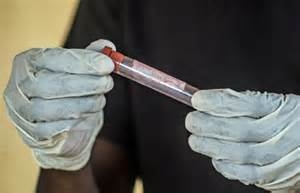
The situation in Senegal, which confirmed its first case of Ebola virus disease on 29 August, remains stable. To date, 67 close contacts of the initial case have been identified and monitored twice daily.
2 of these contacts who developed symptoms were tested for Ebola. Test results were negative. An additional 3 suspected cases across the country were also tested, with negative results.
Starting from 29 August, forty-two days – twice the maximum incubation period – must pass with good surveillance in place and no additional cases reported, before WHO can declare Senegal transmission-free.
However, intense virus transmission in other countries within the sub-region creates a high risk that Senegal will experience additional introductions of Ebola cases.
Responding to the outbreak
The investigation in Senegal benefits from the presence of an Institut Pasteur laboratory in Dakar, where the initial case was identified. This WHO-approved collaborating centre has excellent facilities and staff.
Work undertaken by the Ministry of Health has been supported from the start by two senior WHO epidemiologists, senior staff from Doctors without Borders (MSF), and a team from the US Centers for Disease Control and Prevention.
All have extensive experience responding to previous outbreaks of Ebola virus disease and the related Marburg haemorrhagic fever.
Optimism about the further evolution of the outbreak in Senegal is justified but must be tempered with several cautions and reservations.
Preventing further transmission of Ebola
As in every outbreak investigation, doubts remain about whether all contacts have been identified. Aggressive efforts to identify additional contacts continue, aiming to ensure that no one has been missed.
As elsewhere, the investigation and response teams face difficulties in keeping close contacts in isolation for the 21-day monitoring period.
Contacts have remained in their homes, usually with their families, where they are checked twice daily for symptoms and tested if symptoms develop. Some contacts have resisted monitoring, but none has been lost to follow-up.
Although Senegal has banned all flights from other affected countries, road travellers from Guinea and elsewhere can cross the country’s porous borders. WHO has repeatedly advised countries not to issue travel bans, which are ineffective and needlessly disruptive.
The history of Senegal’s initial case, who arrived in Dakar by road on 20 August, reveals multiple opportunities for high-risk exposure. Continued high-level vigilance is essential; the risk of similar imported cases remains high.
Fortunately, the initial case has now fully recovered; his last 2 blood samples have tested negative for Ebola virus. He will be released soon from hospital, raising questions about his reintegration into a social situation characterized by high yet irrational fear and widespread misinformation about the risk of Ebola transmission for the general population.
Scientists do not fully understand why some Ebola patients recover and others succumb. Prior to the current outbreak, Ebola was considered a rare disease and clinical information is limited.
Some anecdotal case reports from the current outbreak in west Africa suggest that age and the presence of comorbidities are associated with a poor prognosis.
To support the global response to the current outbreak in west Africa, Senegal has agreed to open a humanitarian corridor to facilitate the transport and delivery of international personnel and supplies to affected countries.
Source: WHO
